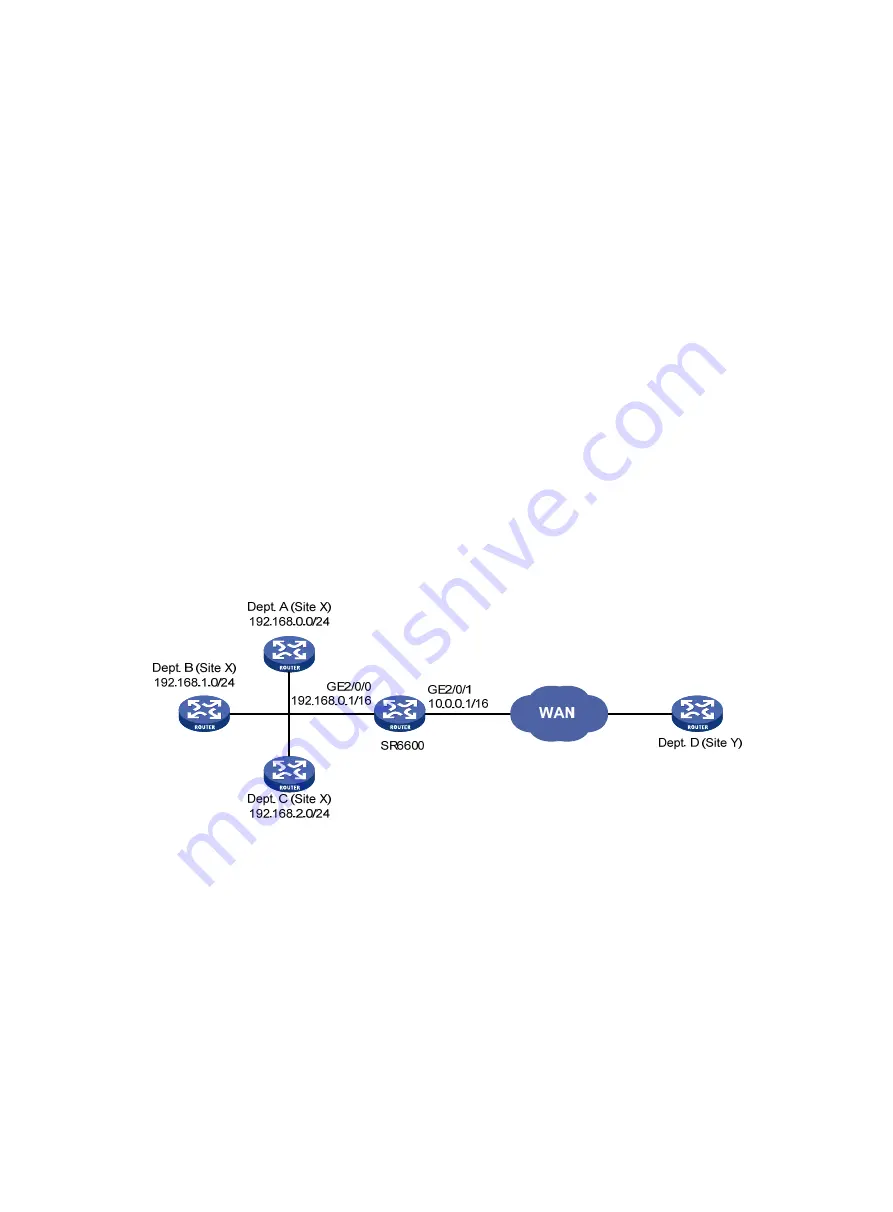
146
Configuration example for HQoS through nesting
QoS policies
Network requirements
A company has agencies in site X and site Y, respectively. The agency in site X has three
departments, A, B, and C. The agency in site Y has one department D. Site X and site Y are
connected through a service provider WAN. Site X is connected to the WAN through a 50-Mbps
Ethernet port.
Department A is on network segment 192.168.0.0/24, department B is on network segment
192.168.1.0/24, and department C is on network segment 192.168.2.0/24. Departments A and B are
important departments, and need the IP voice communication with department D. The voice packets
are UDP packets with destination port number 2000. Additionally, bandwidth must be guaranteed for
the data traffic from departments A and B to department D. The communication between department
C and department D is unimportant, and carries only data traffic.
Configure HQoS through nesting QoS policies to:
•
Guarantee 15 Mbps of bandwidth and limit the bandwidth to 15 Mbps for the traffic from
department A to department D, and guarantee 25 Mbps of bandwidth and limit the bandwidth to
25 Mbps for the traffic from department B to department D.
•
Guarantee 1.5 Mbps of bandwidth for the voice traffic from department A to department D, and
2.5 Mbps of bandwidth for the voice traffic from department B to department D. Send voice
traffic with the highest priority.
Figure 55 Network diagram
Configuration procedures
# Configure IP addresses for interfaces. (Details not shown)
# Create three ACLs to match packets sourced from IP segment 192.168.0.0/24 (department A),
packets sourced from IP segment 192.168.1.0/24 (department B), and packets with destination UDP
port number 2000.
<Router> system-view
[Router] acl number 3000 name A
[Router-acl-adv-3000-A] rule 0 permit ip source 192.168.0.0 0.0.0.255
[Router-acl-adv-3000-A] quit
[Router] acl number 3001 name B
[Router-acl-adv-3001-A] rule 0 permit ip source 192.168.1.0 0.0.0.255
















































